NSPTF (National Space Propulsion Test Facility)
Launchers and Propulsion
NSPTF (National Space Propulsion Test Facility) of the UK
In 2016, the UK Space Agency is investing £4.12m in a National Propulsion Test Facility, giving the UK a new facility for space technology testing. The facility will allow UK companies and academia to test and develop space propulsion engines. The planned facility will be based at Westcott in Buckinghamshire, with its strong history of rocketry research for defence and space development, building on existing facilities. 1)
The UK Space Agency investment will add new capabilities for the UK space sector. Government funding will:
• create a new vacuum facility at the Westcott propulsion test site. When used together with the existing industry owned rocket firing test cells, this will allow the simulation of high altitude testing of thrusters up to 2 kN
• upgrade an existing industry owned test chamber to improve capabilities in the 25 N thrust range
• open the facilities, alongside a smaller 1 N thruster test chamber at the site, for the community to use.
The UK’s Science and Technology Facilities Council (STFC), through its RAL Space facility will act as an independent broker for facility access. The European Space Agency (ESA) will be advising and overseeing the initial detailed design phase before a review in the autumn to move to full implementation.
This investment builds on what is already a world-class UK space propulsion sector. One of the industry stakeholders in the project, offering their facilities as part of the National Propulsion Test Facility, is Moog-UK. Moog-UK’s LEROS 1b engine recently placed the NASA Juno spacecraft into orbit around Jupiter following a 5-year journey to the gas giant.
Katherine Courtney, Interim CEO of the UK Space Agency said “Our investment in a National Space Propulsion Facility will add several new capabilities to the UK space sector and build upon what is already a world-class UK space propulsion sector.
Opening these facilities up to UK companies and academia will allow them to develop and test future propulsion engines. We hope this will develop the UK’s competitive edge in space propulsion and produce the next generation of propulsion engines. We hope that UK companies will continue to make successful contributions to international missions, such as the LEROS 1b engine involved in JUNO.”
The new capability will allow cost-effective development and testing of even more impressive engines for interplanetary travel, as well as for the significant commercial telecommunications satellite market. Other UK users of the facility, via the Airborne Engineering test chamber, are expected to include Reaction Engines Limited, who are currently testing advanced rocket nozzle technology for the SABRE engine.
With the facility investment from the UK Space Agency, who will also chair the Steering Board for this national facility, and with STFC’s RAL Space team bringing experience of test facility management to the project, this is an excellent example of UK cross-government, industry and ESA collaboration which will benefit the immediate stakeholders involved in the project, as well as the wider propulsion community by opening access to the facility.
Additional to this, Buckinghamshire Thames Valley LEP are investing their own funding in an Innovation / Incubation Centre and a skills training hub – both of which will support the space sector. These investments have come about as a result of the commitment that Buckinghamshire Thames Valley LEP has demonstrated to support the growth of the space sector and is consistent with the Innovation and Growth Strategy aspiration for LEPs to use local funding to support the space sector.
Development Status
• June 18, 2021: The UK’s new National Space Propulsion Facility has been declared open. ESA oversaw the design, assembly and commissioning of the facility – equipped to test-fire the most powerful classes of rocket engines used aboard spacecraft – which will now be managed by the UK Government’s Science and Technology Facilities Council. 2) 3)
- UK Science Minister Amanda Solloway formally opened the National Space Propulsion Facility, which is based at Westcott Venture Park in Buckinghamshire, a historic centre for UK rocketry.
- The Minister declared: “As we build back better we are investing in our brightest space scientists, the facilities they work in and the technologies they are creating. This pioneering facility will support our ambitious space businesses, enabling them to undertake complex spacecraft engine testing, while boosting the local economy by creating highly skilled jobs.”
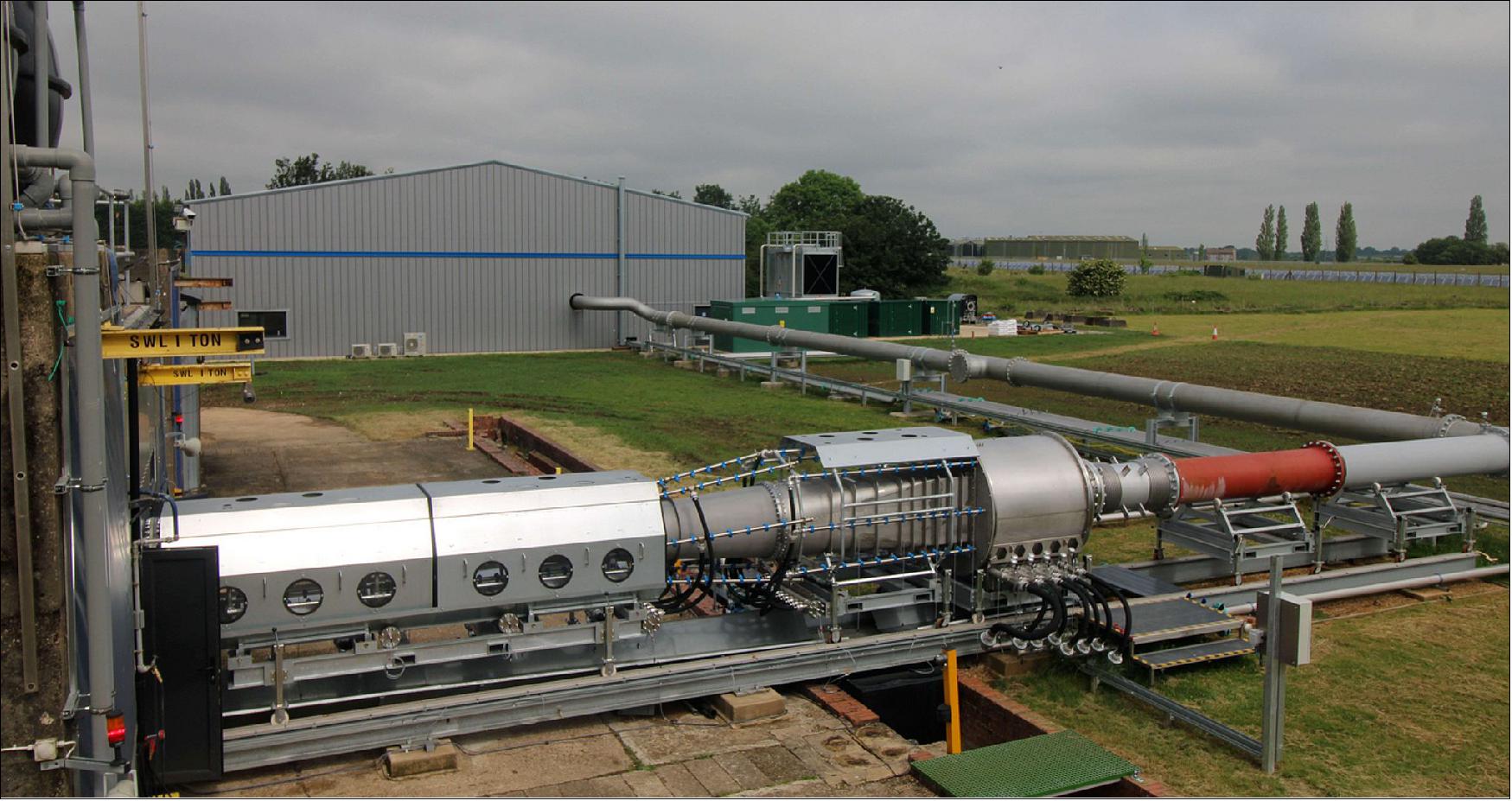
- A rocket is needed to launch a mission up into space, but satellites in orbit and spacecraft headed to other parts of the Solar System are equipped with smaller onboard rocket engines of their own, essential to let missions perform maneuvers in space, controlling their own orientation and direction.
- “The new facility’s thruster test cell can perform test-firings of the largest class of satellite engines, delivering up to 1300 Newtons of thrust,” remarked Mark Ford, Head of ESA’s Propulsion Engineering section. “It will serve as the gold standard for testing of the biggest, mission-enabling thrusters to come, including the new ESA-supported High Thrust Apogee Engine, designed for future exploration missions, as well as numerous commercial projects.”
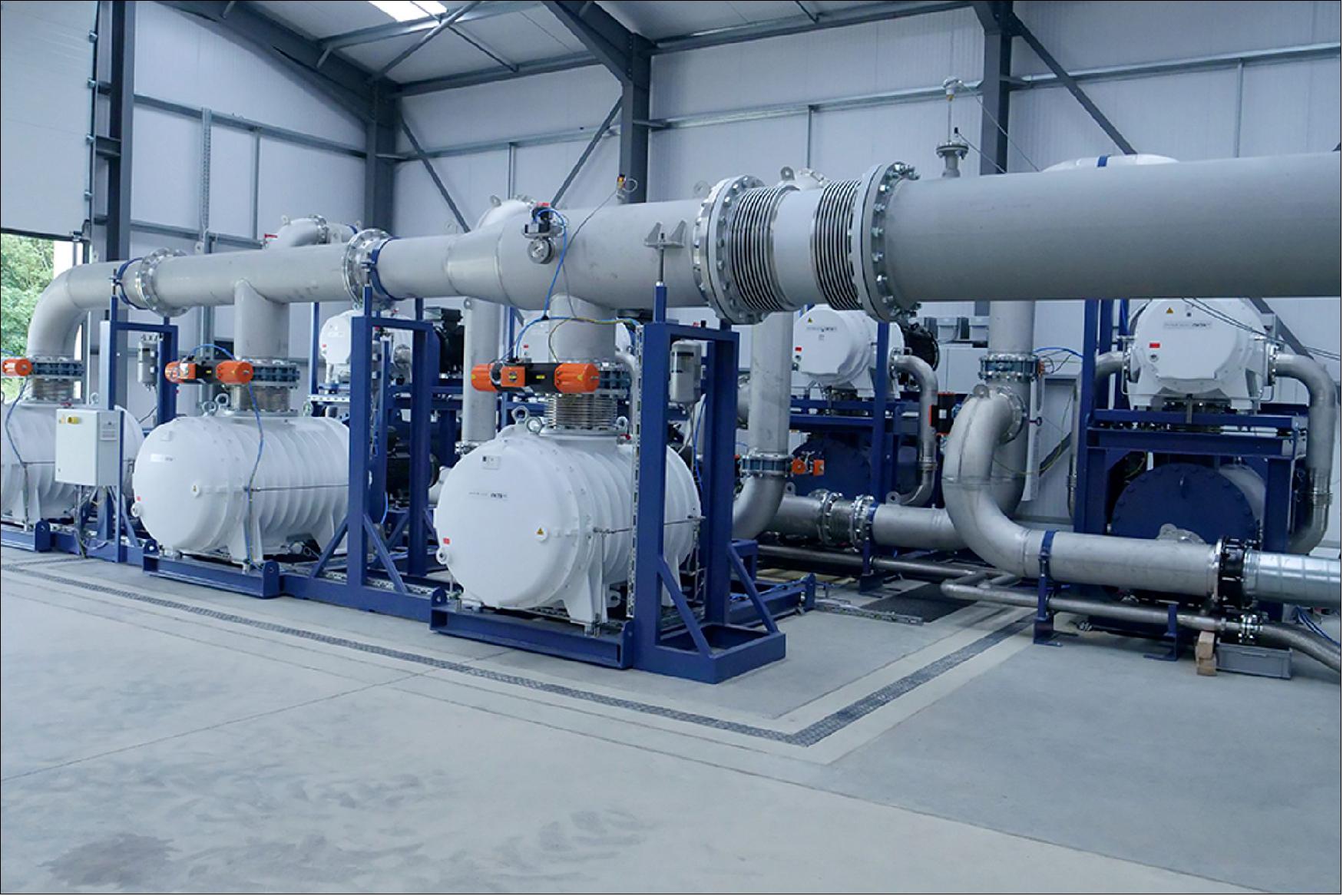
• December 18, 2020: Today marks the start of final assembly of the UK’s new National Space Propulsion Facility. ESA is providing technical oversight and financial backing for the facility, which is being equipped with state-of-the-art infrastructure to test the most powerful engines used to shift the orbits of space missions. 4) 5)
- The National Space Propulsion Facility is based at Westcott Venture Park in Buckinghamshire, a historic centre for UK rocketry.
- This new site is intended for the testing of rocket engines for operation in space. Accordingly it is designed to simulate the vacuum conditions that the engines must operate in down here on Earth, testing the largest class of satellite engines, delivering up to 1300 Newtons of thrust.
- The ability to accelerate spacecraft is fundamental to the success of any space missions. To quote Isaac Newton: ‘For every action there is an equal and opposite reaction’. As space missions grow larger, or aim to venture further away to more challenging destinations in space, the engines they rely on must grow in scale as well.
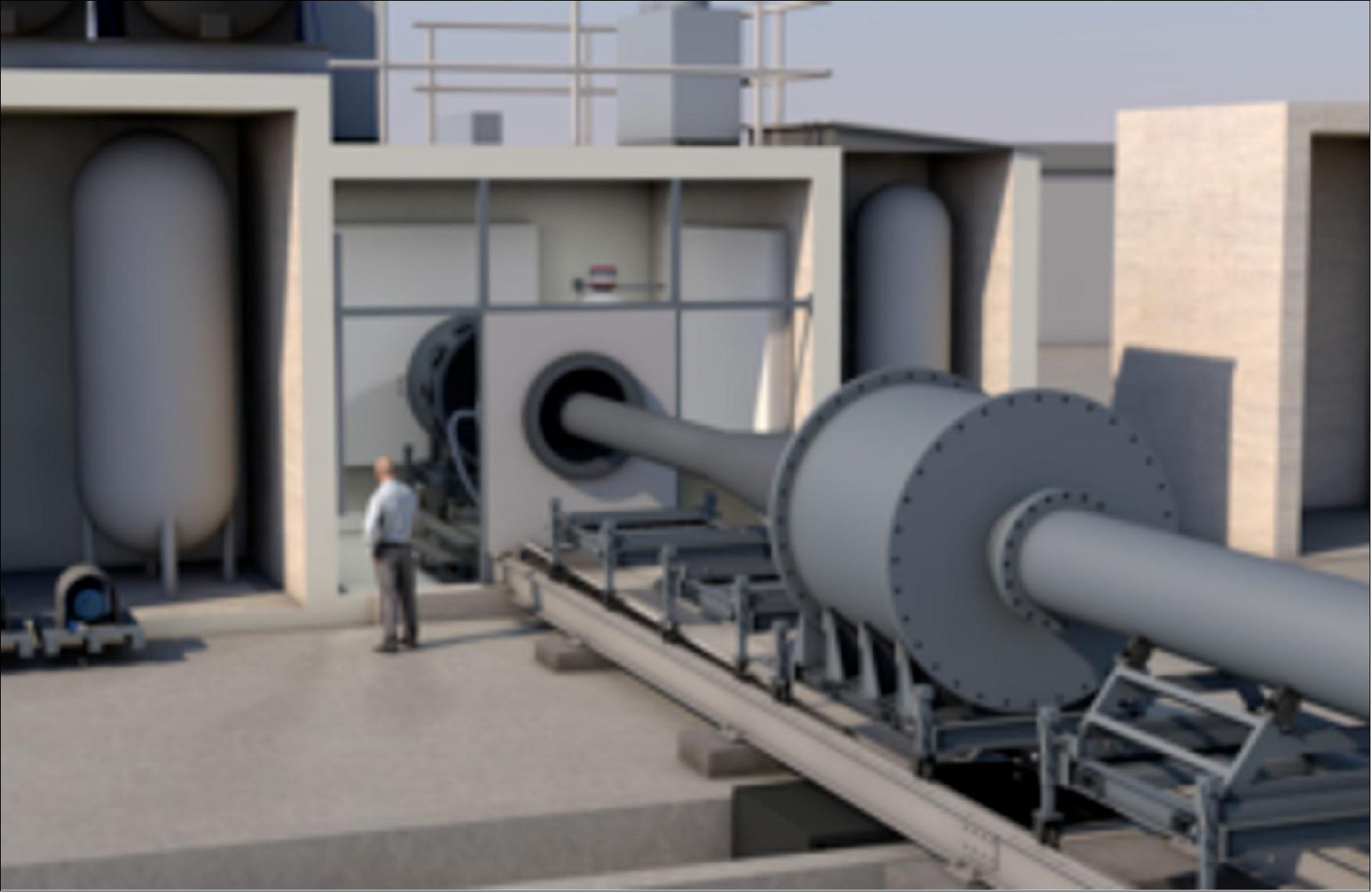
- “There are times when a single more powerful thruster offers much better performance than multiple small thrusters,” comments Mark Ford, Head of ESA’s Propulsion Engineering section.
- “The scale of thrusters to be tested here might for instance serve the largest class of telecommunications satellites, spacecraft serving as part of the international Mars Sample Return effort and missions to the Moon and planets.”
- Fitted with powerful pumps to maintain vacuum conditions, the facility’s thruster test cell will have three modes of operation: equivalent sea level pressure, medium 20 km altitude equivalent pressure and high altitude of more than 100 km height equivalent pressure.
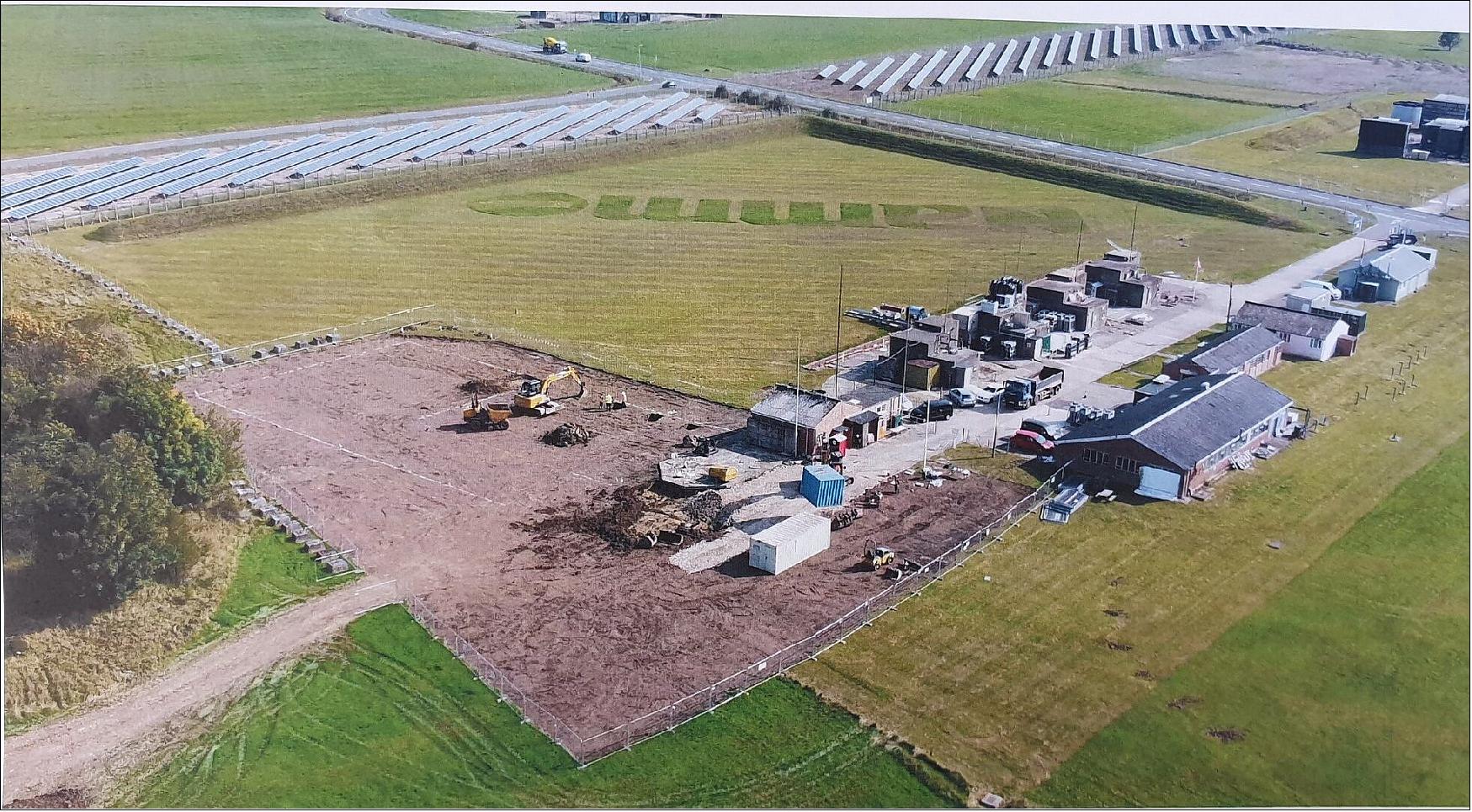
- “Now that the test cell is in place, ESA will be leading commissioning of the site, after which it will be handed over to be run by the UK’s Science and Technology Facilities Council,” adds Mark. “The facility will become an authority for testing of space mission thrusters across the UK and Europe.”
- ESA’s General Support Technology Program (GSTP) has invested around €4,500 000 in the design, development and building of the facility, in collaboration with the UK Space Agency and UK industrial partners including rocket manufacturer and facility contractor Nammo UK.
- The facility’s first high altitude testing is expected in the first quarter of next year, with Nammo testing their ESA-supported, High Thrust Apogee Engine, designed for future Mars missions. The company will then follow up with commercial testing of their 1C and development of the ACE 25 engines, marking a return of large commercial rocket thruster testing to the UK.
- The facility will be available to the wider propulsion community from the middle of next year. Many other propulsion stakeholders have expressed interest in this new addition to Europe’s engine testing capabilities.
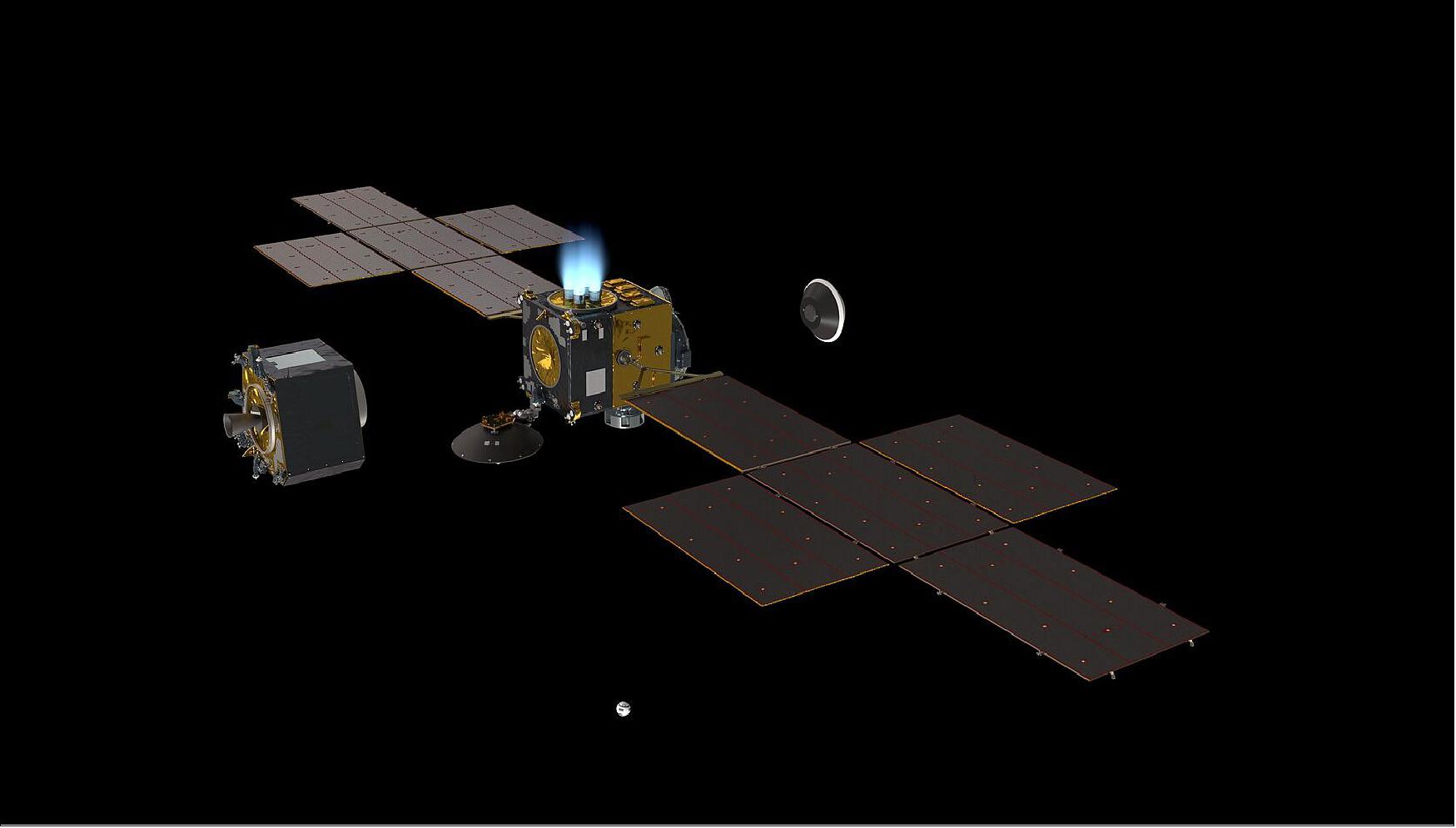
About GSTP
- Through the optional GSTP, Participating States and Industry work together to convert promising engineering concepts into a broad spectrum of useable products for space and the open market.
- The long-running GSTP is widely recognized as key a programme for building knowhow and capabilities in the space sector, helping to assure European competitiveness in the global market, creating jobs and keeping Europe at the forefront of technological innovation.
References
1) ”UK National Space Propulsion Facility,” UK News, 12 July 2016, URL: https://www.gov.uk/government/news/uk-national-space-propulsion-facility
2) ”ESA-led space propulsion test facility passed to UK owner,” ESA Enabling & Support, 18 June 2021, URL: https://www.esa.int/Enabling_Support/
Space_Engineering_Technology/ESA-led_space_propulsion_test_facility_passed_to_UK_owner
3) ”Boost for UK space sector as new facility offers cheaper and greener rocket testing,” UK Space, 17 June 2018, URL: https://www.ukspace.org/national-space-propulsion-test-facility-opened/
4) ”ESA partnering on UK’s new space thruster test site,” ESA Enabling & Support, 18 December 2020, URL: https://www.esa.int/Enabling_Support/
Space_Engineering_Technology/ESA_partnering_on_UK_s_new_space_thruster_test_site
5) ”New satellite propulsion test facility to propel UK into new space age,” UKSA Press Release, 18 December 2020, URL: https://www.gov.uk/government/news/
new-satellite-propulsion-test-facility-to-propel-uk-into-new-space-age
The information compiled and edited in this article was provided by Herbert J. Kramer from his documentation of: ”Observation of the Earth and Its Environment: Survey of Missions and Sensors” (Springer Verlag) as well as many other sources after the publication of the 4th edition in 2002. - Comments and corrections to this article are always welcome for further updates (eoportal@symbios.space).